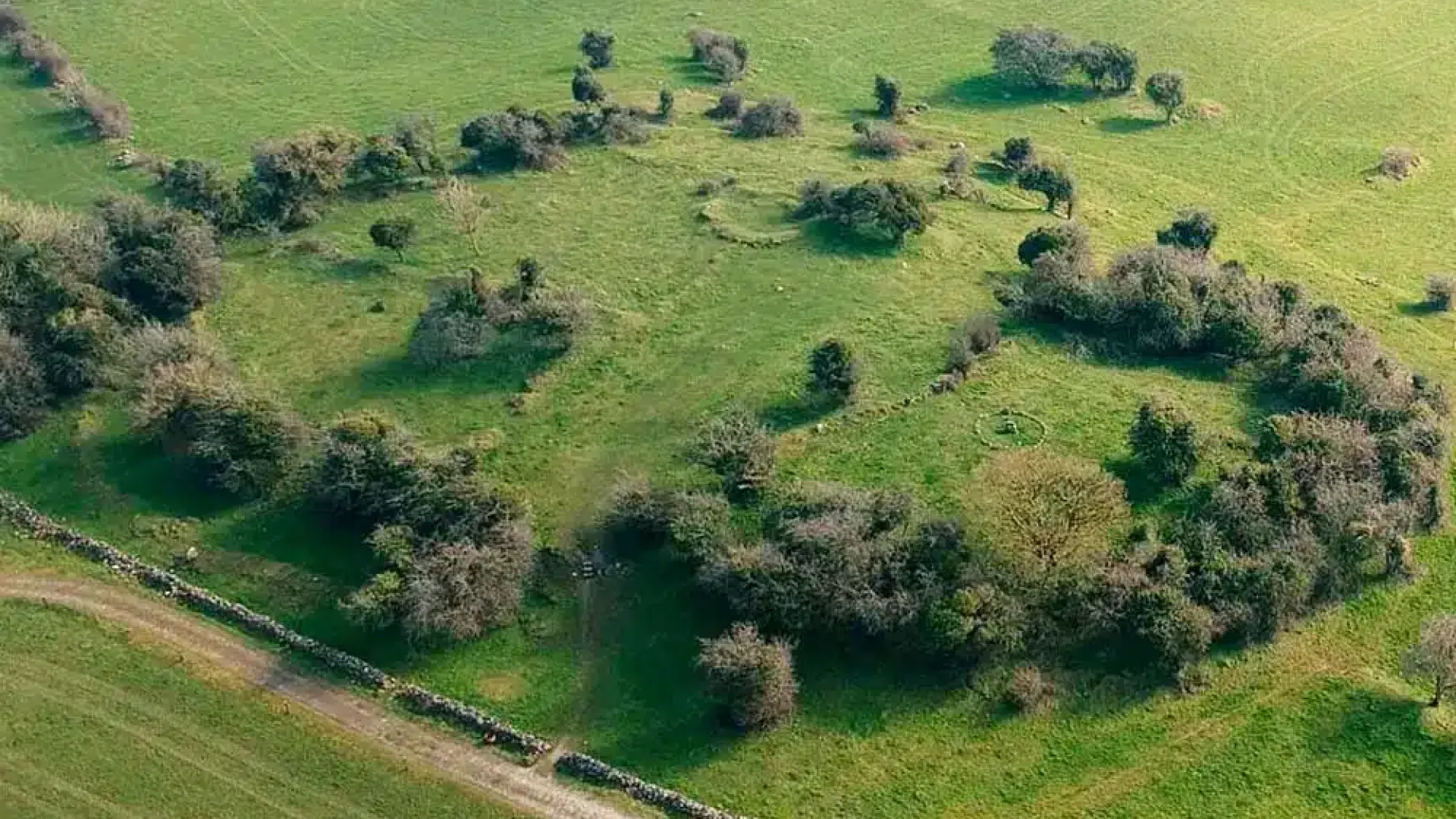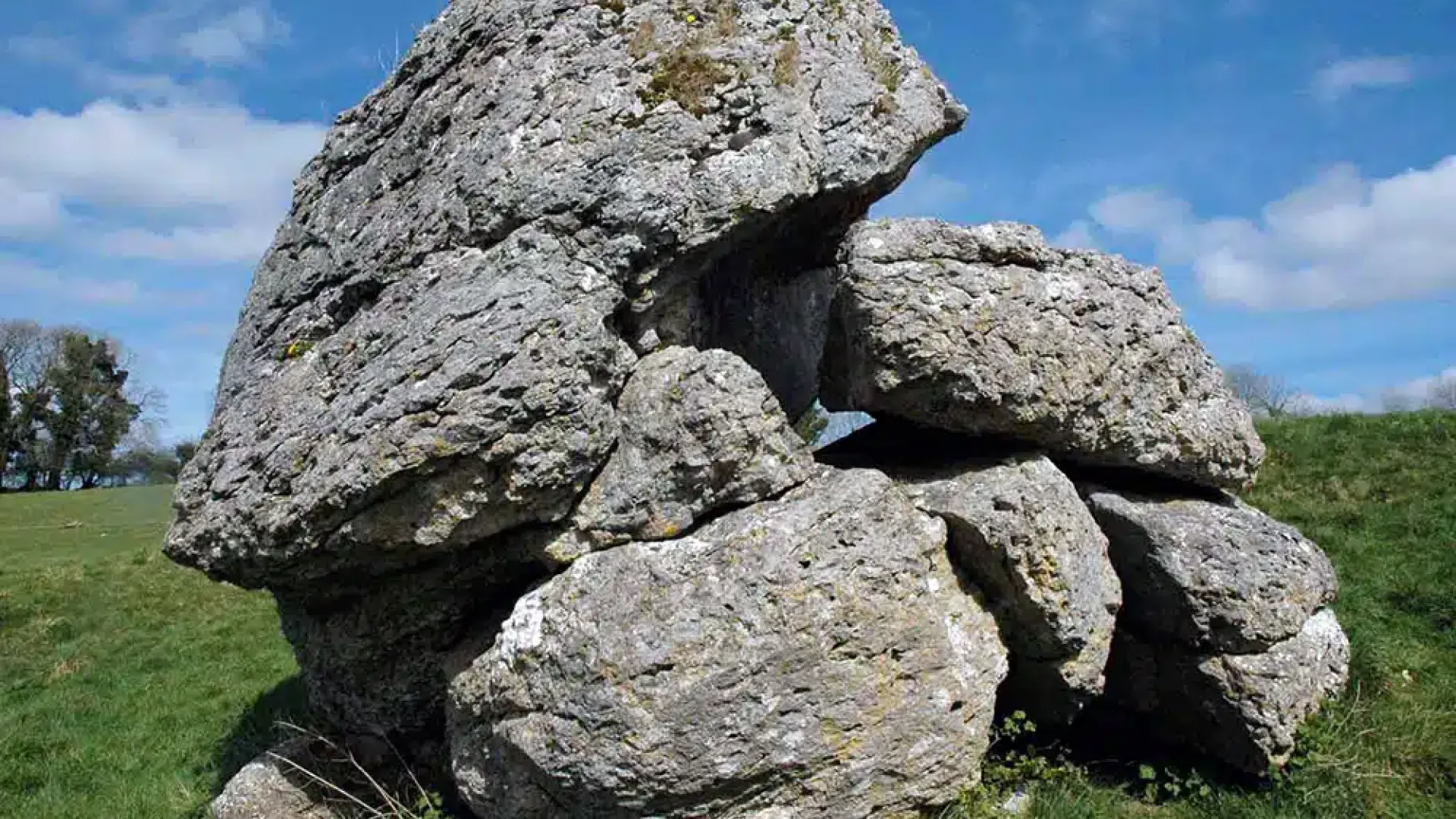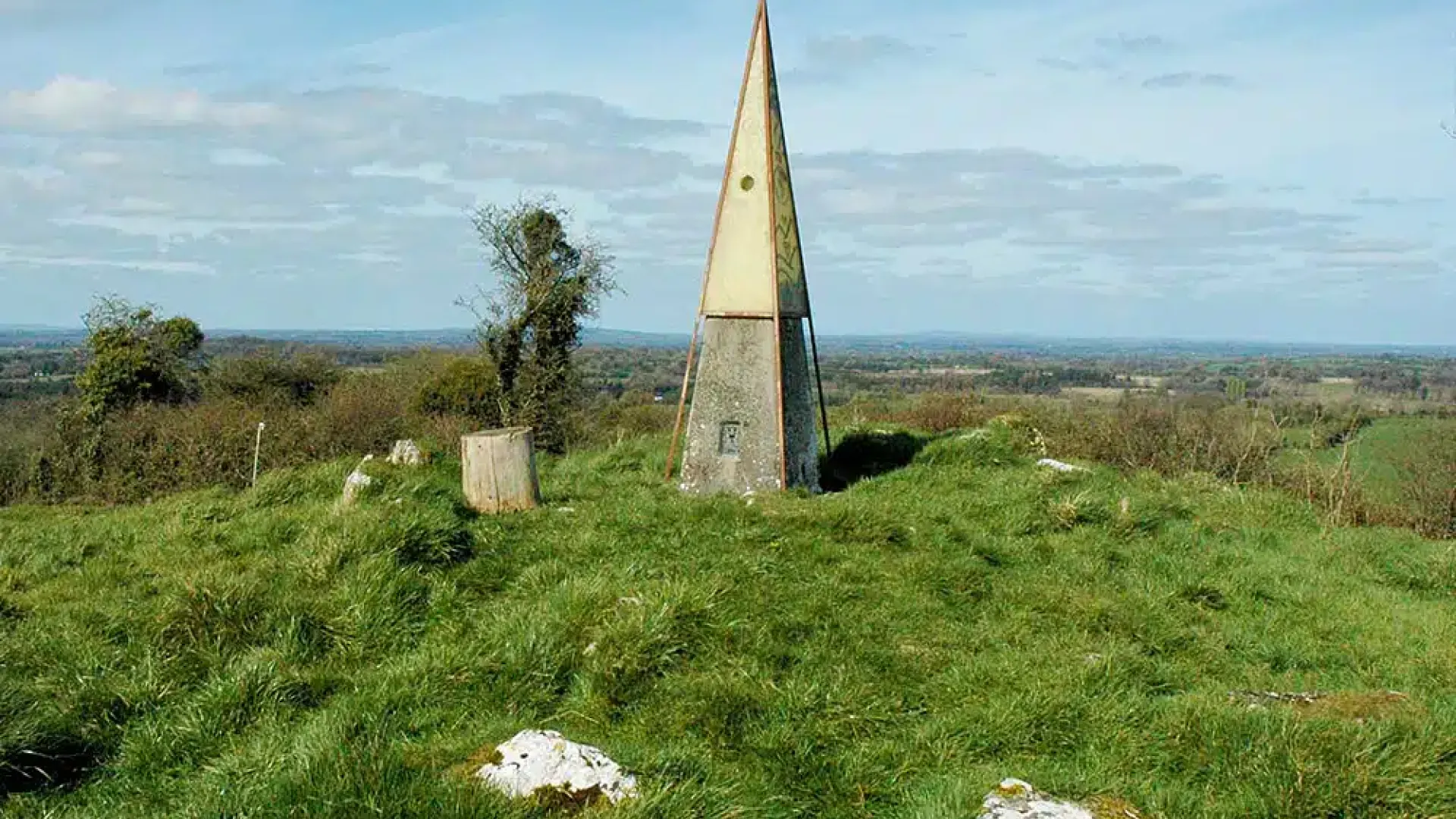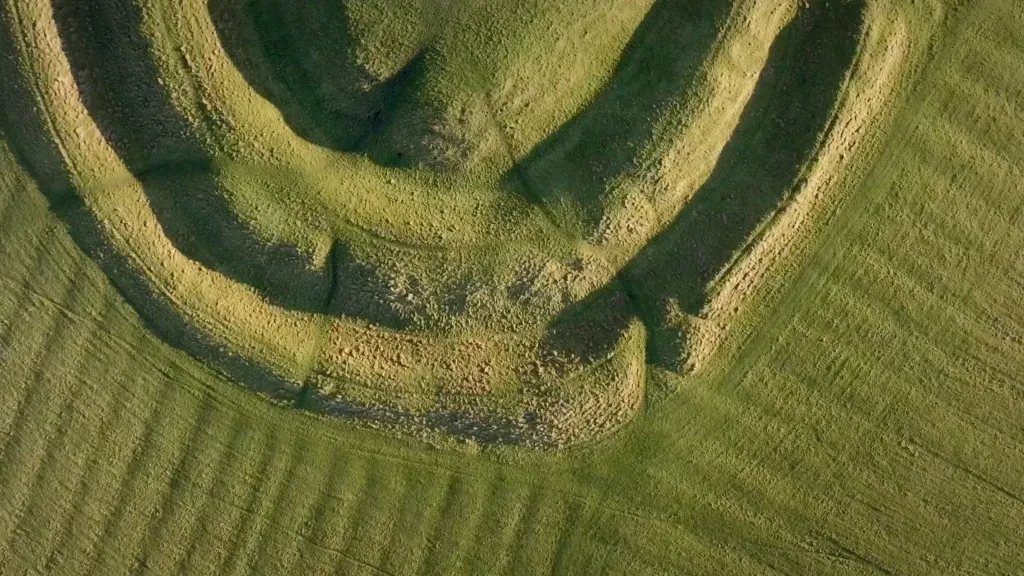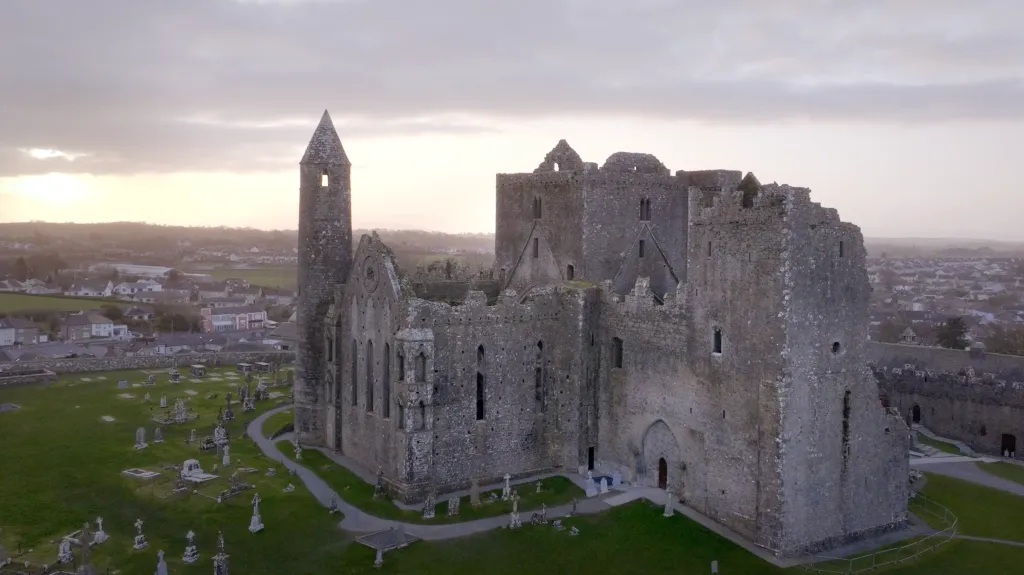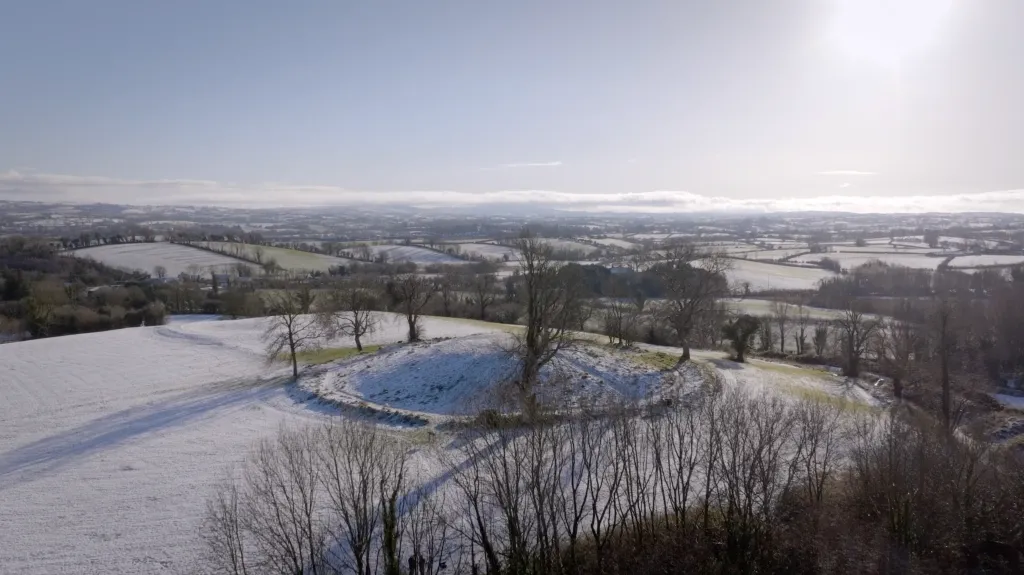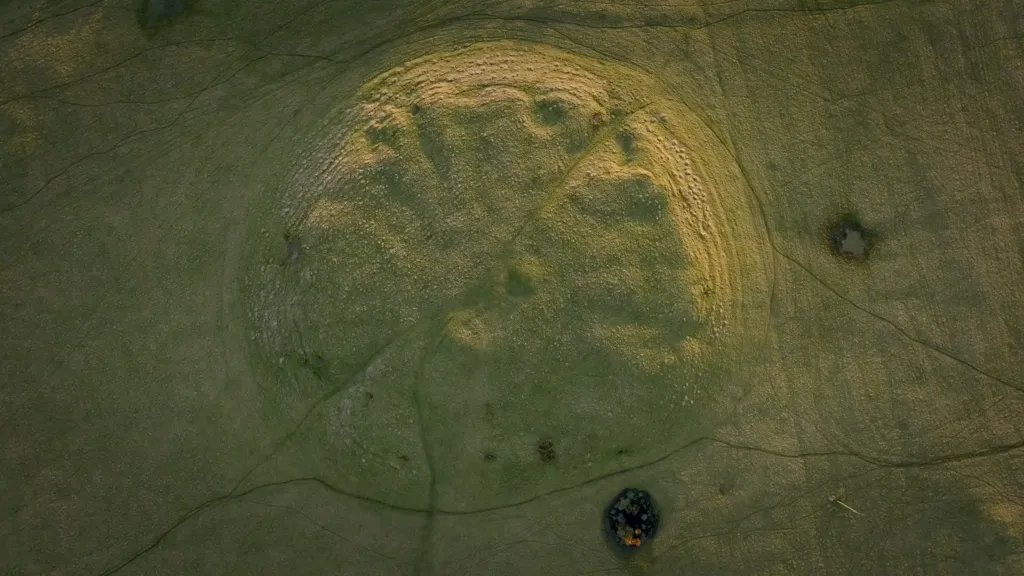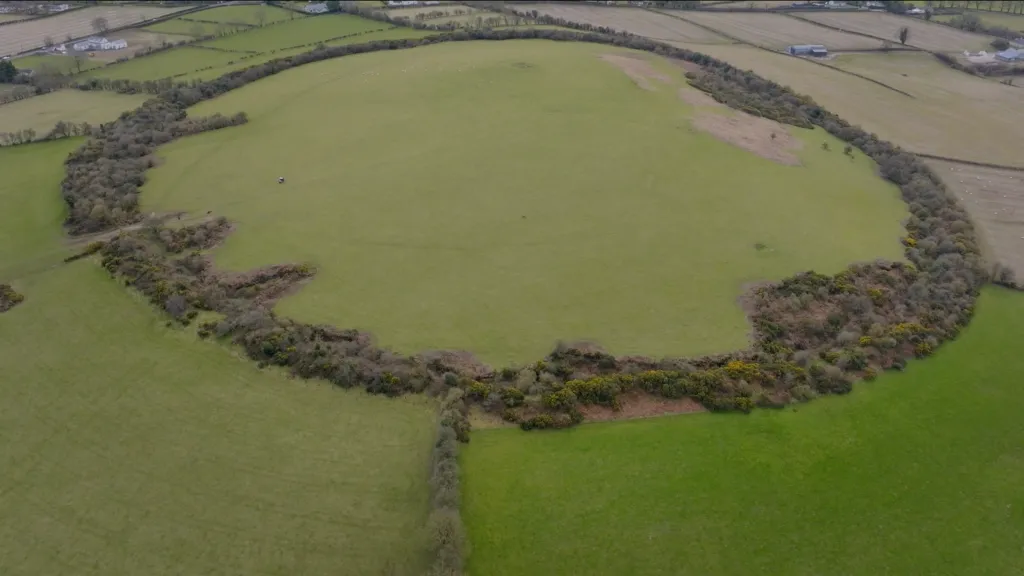The Hill of Uisneach is a broad and prominent ridge, in Co. Westmeath, with extensive views of over twenty counties. Most of the thirty-five known archaeological monuments at Uisneach are located on the plateau summit of the ridge. These include burial monuments and enclosures, standing stones, ringforts and an embanked roadway. The number and variety of monuments at Uisneach demonstrate its importance as a place of burial, ritual and ceremony over several millennia.
Uisneach’s ceremonial landscape contains an array of monuments stretching over the townlands of Ushnagh Hill, Mweelra, Rathnew and Kellybrook . The earliest upstanding monument is thought to be a Neolithic Passage tomb and is often called ‘St Patrick’s Bed’. The ‘Assembly of Uisneach’ is mentioned in various sagas and legends and, according to medieval tradition, the god Lugh was killed during an assembly at Uisneach. There is also a tradition that the primeval fire was lit at Uisneach by the druid Midhe. Its cultural significance was revived and celebrated by political leaders like Daniel O’Connell and Eamon De Valera in the modern era. Uisneach continues to have spiritual significance and the site hosts an annual Bealtine fire festival.
KEY FEATURES
The monuments range in date from the Neolithic, Early Bronze Age to the medieval period, indicating human activity spanning some five millennia. Archaeological excavations at Uisneach in the 1920s revealed evidence of high‐status occupation, thought to be associated with assemblies and kingship ceremonies during the early medieval period.
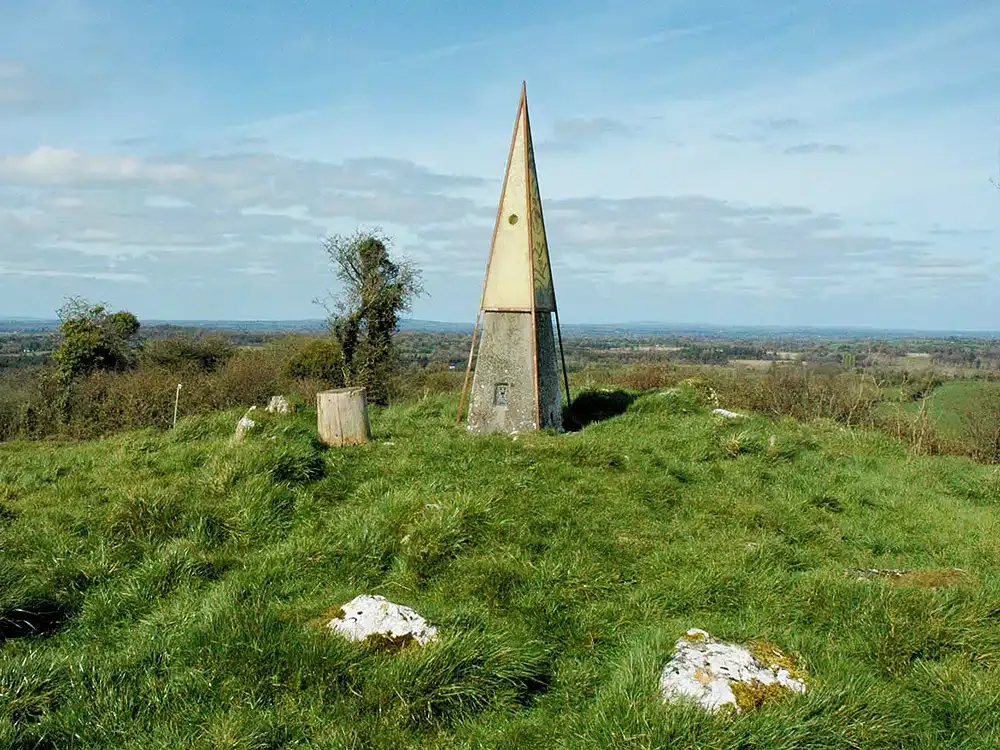
St. Patrick’s Bed – Passage Tomb
Situated at the summit of the hill, this circular mound is likely a megalithic tomb. Surrounded by a defined enclosure, it is thought to be the oldest man-made structure on Uisneach. Its continued presence signifies the site’s sacred role across thousands of years—from prehistoric burial and ceremony to later royal, mythological, and Christian associations.
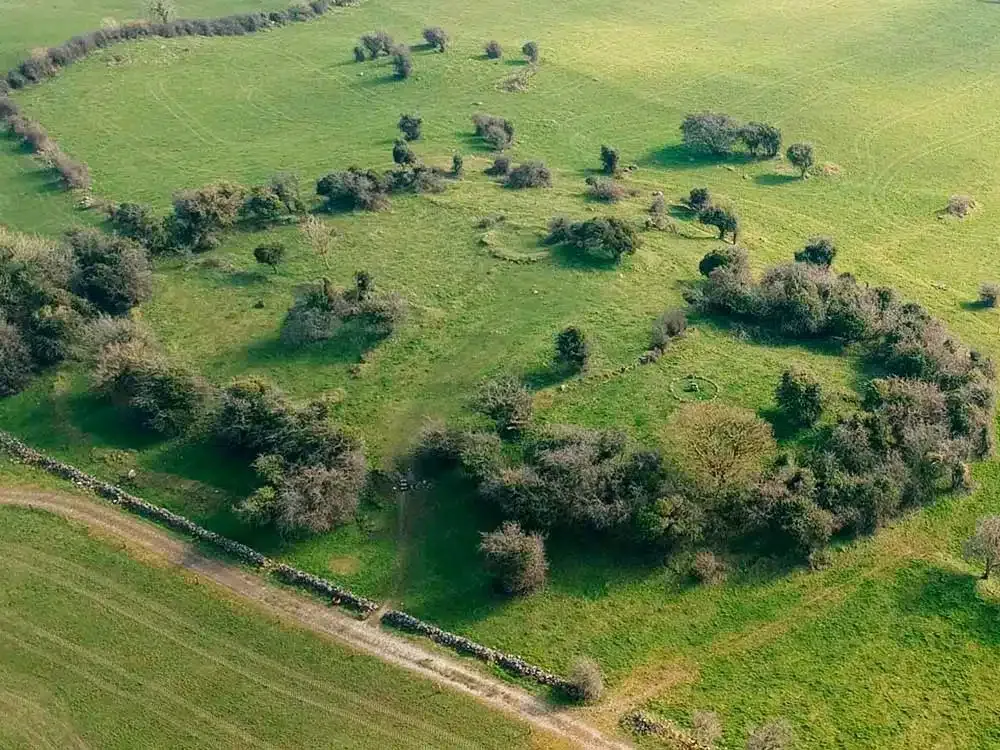
Rathnew ‘The Palace’ – Ringfort Enclosure
Rathnew probably functioned as both a residence and ceremonial site and is the most prominent of the four Early Medieval ringforts located on the hill. It is formed of two adjoining circular ditched enclosures and has an overall diameter of 112m. Excavations revealed evidence for domestic structures, souterrains and metal working debris. The findings indicate habitation by an elite group, possibly early medieval kings who occupied it from the late seventh/eighth to the eleventh centuries
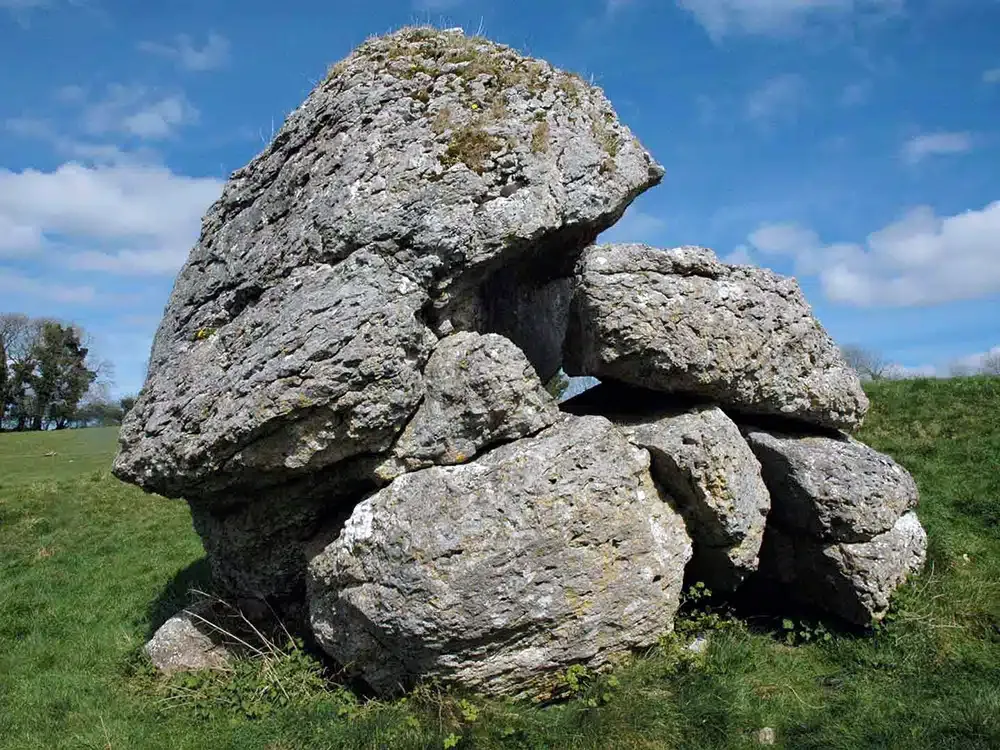
Ail na Míreann – Stone of the Divisions
This limestone boulder is a massive fragmented glacial erratic over 4m high. Known as the Cat Stone, it is said to mark the mythological centre of Ireland where the ancient provinces once met. The stone is enclosed by a circular earthwork or barrow. This feature is a National Monument [No. 155] and is under the care of the OPW.
Visit Hill of Uisneach
Accessible by Guided Tour OnlyGuided Tour Only
Rathnew, Loughnavalley,
Co. Westmeath, N91 R6C9
Other Royal Sites
